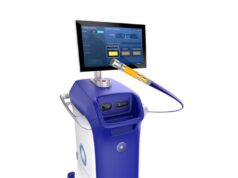
By Jagmeet Singh
There are considerable data to suggest that the QRS morphology is an important determinant of response to cardiac resynchronisation therapy (CRT). In fact, most recent reports have emphasised that patients with left bundle branch block (LBBB) QRS morphology are more likely to respond to CRT. Recent guidelines have accepted this notion and have made a stronger case to implant CRT devices in heart failure patients with LBBB vs. those with non-LBBB morphology. In fact, non-LBBB patients with a QRS width of
It is relevant to remember that, although selecting the right patient to receive CRT is important, it is equally essential to seek out the appropriate wall/segment of the left ventricle to pace. It is quite well recognised that patients with non-LBBB behave differently. This patient population is sparsely represented in major clinical trials and has been shown to have considerable heterogeneity in the distribution of mechanical dyssynchrony. It is possible that a certain component of the non-responsiveness observed in the non-LBBB patients is because we are implanting all our patients with a one size fits all approach. Most implanting physicians are using an anatomical-based approach, where the free lateral wall is targeted as the most optimal site. This may work quite well in most patients with LBBB, where the electrical activation sequence is such that the most delayed portion of the heart to be activated is usually in the posterolateral or lateral left ventricular wall. There is considerable evidence from electroanatomical mapping studies to suggest that the electrical activation of the left ventricle in the non-LBBB is quite different from LBBB and often the region of electrical and mechanical delay may not be along the free lateral wall. This again reinforces the need to individualise our pacing approach for patients receiving CRT.
A recent online publication (April 2013) in the European Heart Journal from our group [Cardiac Arrhythmia Service, Massachusentts General Hospital] shows that a more individualised pacing approach works better. This paper authored by Dr Jagdesh Khandala showed that targeting the region with the maximal electrical delay translates into better outcomes for both patients with LBBB and non-LBBB. This study demonstrated, among 144 patients, that the electrical location of the left ventricular lead is associated with an improved event free survival as assessed by freedom from hospitalisation for heart failure, left ventricular assist device (LVAD), transplantation and mortality. Left ventricular lead electrical delay (LVLED) was measured intra-procedurally as an interval between the QRS onset on the surface ECG to the peak of the sensed ECG on the left ventricular lead, which was corrected for the QRS width. Among the 144 patients, heart failure hospitalisation was higher in the non-LBBB group compared with LBBB morphology. However if the left ventricular lead was placed greater than 50% into the surface QRS signal (ie. LVLED> 50%), there was greater than two-fold reduction in heart failure hospitalisation, as well the composite outcome within the non-LBBB group. Similarly, marked improvement in clinical outcome was observed in the LBBB group, with the left ventricular lead placed in a region that was delayed in its electrical activation.
This study has significant clinical implications, suggesting the need to individualise our left ventricular lead implantation strategy. Targeting the region of electrical delay could potentially improve clinical outcomes in patients with non-LBBB. Our results suggest that targeting the segment with maximal electrical delay may be more meaningful than conventional anatomical targeting of the left ventricular lead to the lateral free wall. This approach would however need to be validated prospectively.
Jagmeet Singh, director, Resynchronization and Advanced Cardiac Therapeutics (R-ACT) Program, associate professor, Harvard Medical School, Massachusetts General Hospital, Boston, USA









